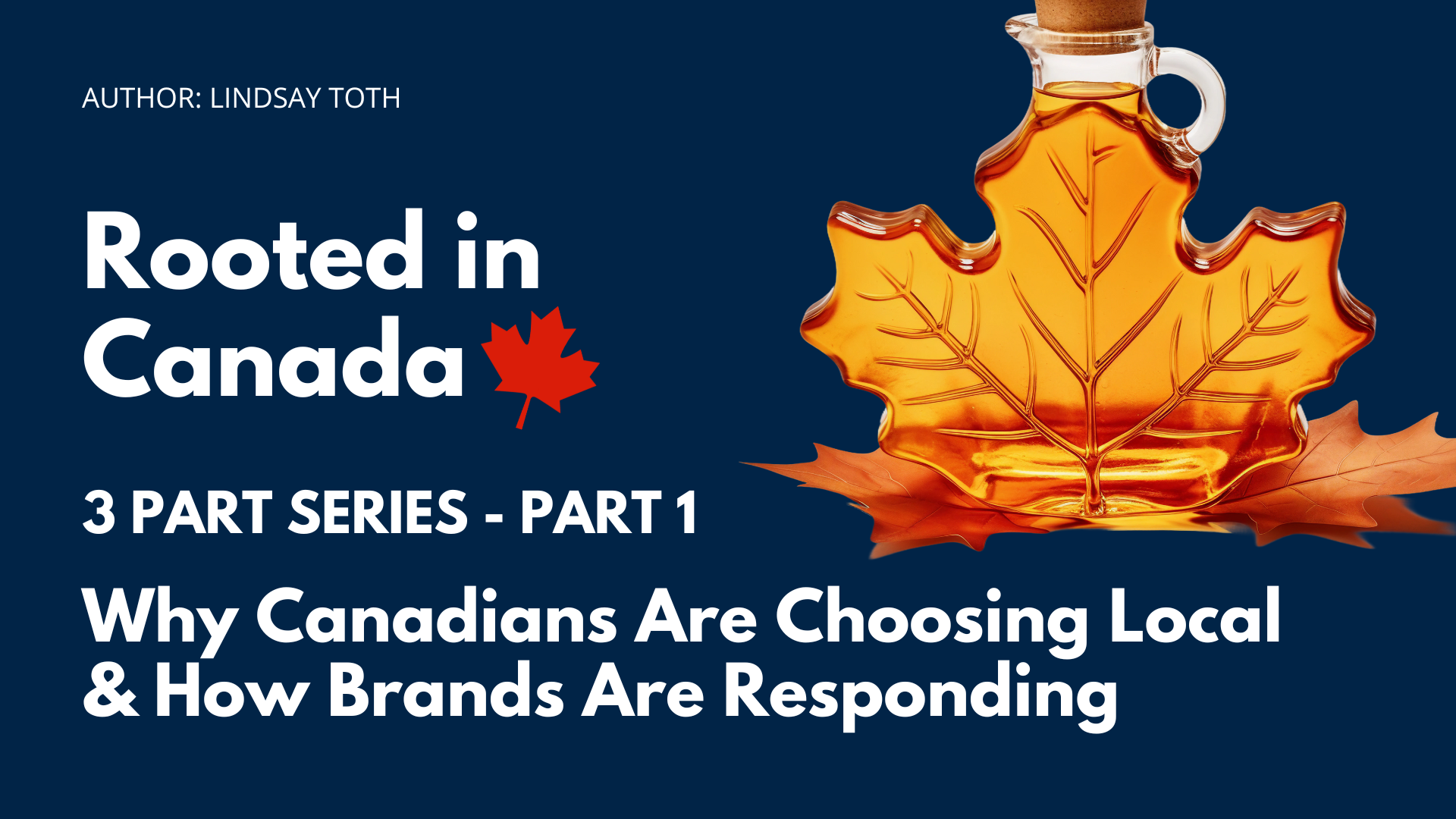🍁 Rooted in Canada | Part 1: Why Canadians Are Choosing Local & How Brands Are Responding
By: Lindsay Toth
That little maple leaf on your food packaging has become more than just a symbol. It represents trust, quality, and a direct connection to Canadian farmers and producers. Today, shoppers across the country are making a conscious effort to fill their carts with food grown and made closer to home. The numbers tell the story: 72% of Canadians now prioritize buying local food, a 38% increase since 2020 (StatCan). This isn’t just a trend. It’s a fundamental shift in how we think about what we eat and where it comes from.
Why Local Food Matters More Than Ever
The pandemic changed everything. Empty shelves and supply chain disruptions made us realize how fragile our food system can be. Suddenly, knowing where our food came from wasn’t just nice to know. It was essential. According to a 2023 study, 85% of Canadians trust locally produced food more than imported options, associating it with freshness, safety, and ethical farming practices.
But it’s not just about security. There’s something deeper at play. Choosing local means supporting farmers in our communities, keeping jobs in small towns, and strengthening regional economies. In fact, research shows that every dollar spent on local food generates $1.70 in economic activity (CFIB). That’s a powerful reason to reach for the Canadian-made option.
The Maple Leaf Label: More Than Just Marketing
Brands are taking notice. The "Made in Canada" label has become a key selling point, and companies are going beyond just slapping a maple leaf on packaging. Take Maple Leaf Foods, for example. Their "Raised Right, Made Here" campaign doesn’t just highlight Canadian sourcing. It tells the story behind the food, from Alberta pork farms to Canadian-grown wheat. And consumers are responding. Their Canadian-made product lines saw 11% higher sales growth in 2023 compared to competitors relying on imported ingredients.
How Grocery Stores Are Adapting
Walk into any major supermarket today, and you’ll see the local movement in action:
Loblaw’s "Canadian Choice" sections showcase seasonal produce from Ontario orchards and Quebec dairies.
Sobeys’ "Local Producers Program" gives small-batch brands a dedicated space on shelves.
Costco now requires clear country-of-origin labeling, responding to shoppers who want transparency.
Even farmers’ markets are booming. Since 2021, the number of markets nationwide has grown by 27%, with annual sales topping $1 billion (Canadian Farmers’ Market Coalition). For city dwellers, these markets offer a direct link to the people who grow their food, something big retailers can’t easily replicate.
The Challenges of Buying Local
Despite the enthusiasm, there are still hurdles. While 85% of Canadians say they want to buy local, only 30% can consistently identify truly Canadian-made products (Canadian Food Focus). Vague labeling, like "Made in Canada from domestic and imported ingredients," leaves many shoppers confused.
Price is another barrier. Local products often cost 10-20% more than mass-produced imports, making them harder to justify for budget-conscious families. But some businesses are finding creative solutions. Ontario’s Field Gate Organics, for example, uses a direct-to-consumer subscription model to cut costs and offer competitive prices.
What’s Next for the Local Food Movement?
This shift toward local isn’t slowing down. Younger shoppers, especially Millennials and Gen Z, are driving demand for sustainable, traceable food. Brands that genuinely commit to Canadian sourcing will have a clear advantage in the years ahead.
Coming in Part 2: We’ll explore how food hubs like the Saskatchewan Food Centre are helping small producers scale up without losing their local roots.
Next time you’re grocery shopping, take a moment to check the label. That maple leaf isn’t just decoration. It’s a choice that supports farmers, strengthens communities, and builds a more resilient food system.






